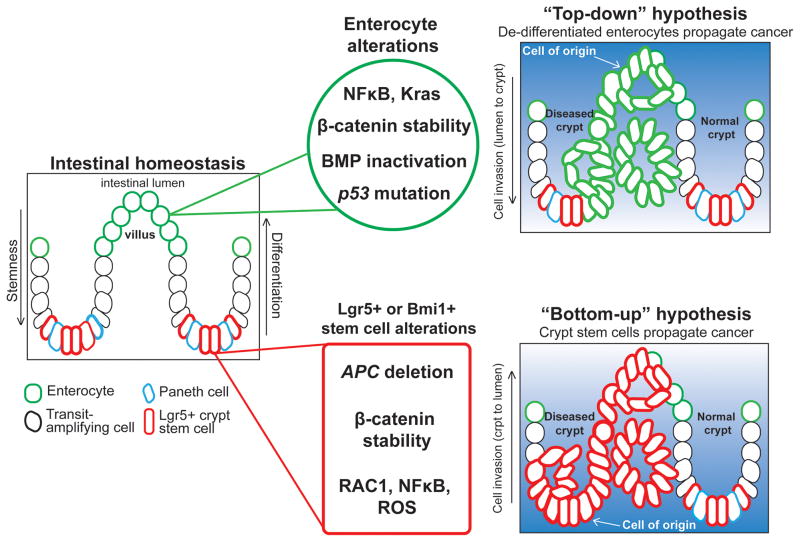Figure 1.
Top-Down Versus Bottom-Up Hypotheses of Colorectal Cancer (CRC) Initiation. During intestinal homeostasis, Lgr5+ or Bmi1+ basal crypt stem cells proliferate and give rise to transit-amplifying (TA) cells (black outline) and, subsequently, differentiated enterocytes and other mature cell types (green). Alterations in non-stem cells, such as simultaneous NF-κB activation and β-catenin stabilization, can produce adenomas, suggesting that CRC can initiate from the top of the villus and grow down into the crypt (top right). This ‘top-down’ hypothesis proposes that differentiated or committed cells acquire stem-like characteristics to drive tumor growth from the luminal side of the colon. According to the more-traditional ‘bottom up’ model, mutations occurring directly in Lgr5+ or Bmi1+ crypt stem cells, such as loss of Apc, initiate adenoma and CRC formation. The ‘bottom-up’ hypothesis suggests that mutations accumulate in crypt stem cells as they continually proliferate, and then can serve as the effective cell of origin in CRC; they propagate disease from the base of the crypt, growing toward the lumen (bottom right).

